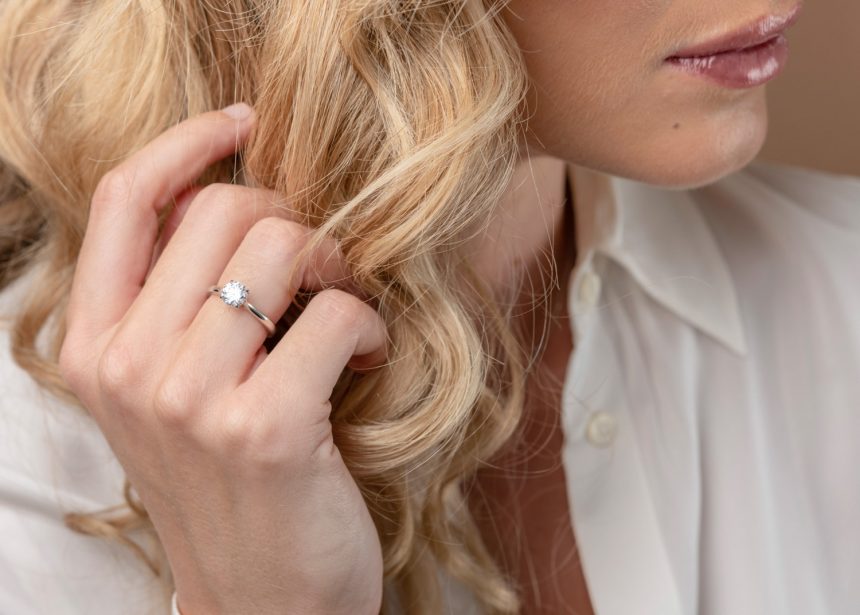
Jewellery can be one of the most challenging subjects to photograph. It can be for a number of different reasons, which make it time-consuming both within production and post-production. This article will discuss some of the common issues faced when photographing jewellery from a professional perspective. And how you can fix them.
Fingerprints and Debris on Jewellery
High-quality photography picks up everything. Even specs of dust are invisible to the naked eye. Which can often make it impossible to ensure that there are no specks of dust or fingerprints. Until after you have taken the shot, and then it takes up precious time during the editing process.
One of the best ways to avoid these issues is to wear gloves whilst handling pieces and polish them well before shooting. However, this will not always completely fix the problem, and often there will be post-production needed to remove some dust.
Camera reflections
Due to the reflective nature of stones and metals, it can be tough to avoid reflections when photographing jewellery pieces. Many different things can cause reflections; they can be caused by harsh lighting or even stuff behind the camera, like the camera itself or it’s surroundings.
You’ll need to experiment with removing reflections like adjusting the angle or using pieces of cards to block areas like the room behind the camera. If harsh lighting is your issue, you might want to look into purchasing a lightbox to soften your lighting.
Difficult stones
Some stones can be very problematic in terms of the way they catch the light when photographing them. It can be complicated with iridescent stones like opal or labradorite; photos can often wash out the stones and remove that stunning prismatic quality.
Another problem can be surrounding block colour transparent stones like sapphires and emeralds. Lighting can wash these stones out and dull their beautiful colours. The best way to avoid these issues is to photography the stone and the metal part of the jewellery in two separate photos and then combine them in the editing process. Although this can be time-consuming, it does produce the best results.
Jewellery Positioning

Positioning is everything when getting good quality photos. You want to make sure that your photos are consistent if you sell multiple variations of the same product. It’s important you stick with an angle or position with all of your images.
Necklaces can often be challenging to photograph due to how easily manipulated they are. It can be because the v of chain that holds the pendant can be too wide or not even, which can make photos appear slanted and unprofessional. To fix this, you’ll want to check your photos as you take them carefully so you can double-check that the shape of the chain is consistent throughout.
Another issue can be with rings; often, you’ll want to photograph them upright to ensure you see all parts of the piece. However, holding rings upright can be tricky as anything used to prop the piece up will need to be edited out of the shot and appear as if it was never there.
To fix this issue, you need to use something strong that can be as invisible as possible. We suggest using beeswax or blue-tac to hold your pieces up.
Another method is to photograph the piece at a different angle. You can then adjust it using photoshop to appear upright once you add a white background.
Overall, jewellery photography can be challenging, so it’s always best to evaluate your options. Sometimes the time it takes to teach yourself jewellery photography and solve some of the problems can cost you precious company time. You may even need to weigh up the costs of purchasing equipment too, check out our article on that here.
Check out more of our jewellery photography blogs here. In need of a professional jewellery photographer with years of experience? Check out MO Studios. We are a jewellery photography studio located in the heart of Birmingham’s Jewellery Quarter.


Leave a Reply